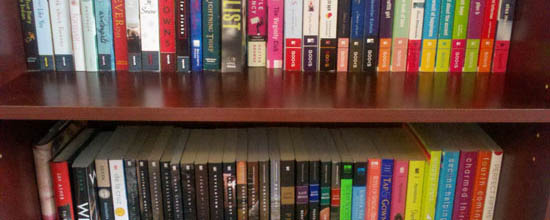The National Books Awards announced their nominees for the 2011 National Book Award for Young People’s Literature last Wednesday, including My Name is Not Easy by Debby Dahl, Inside Out & Back Again by Thanhha Lai, Flesh & Blood So Cheap: The Triangle Fire and its Legacy by Alfred Marrin, Okay for Now by Gary Schmidt, and Shine by Lauren Myracle. Then, a few hours later, Chime by Franny Billingsley was added to the list, for a total of six titles. The addition of a sixth title was apparently due to “a miscommunication.” The miscommunication? Apparently, Chime was meant to be a finalist. Myracle’s Shine, about a teenage girl’s quest to find those responsible for the brutal abuse of her gay one-time best friend, was not. Instead of keeping all six finalists, as it appeared for the last five days they would, the National Book Foundation asked Myracle to withdraw herself from consideration in order to “preserve the integrity” of the awards. Continue reading
YA Lit
I may love young adult books, but there’s no question that I’ve long passed the age of what qualifies as a “young adult.” Once upon a time, however, I was a mini version of me, and oh God did I love to read. Sure, it started with Little Bear and Frog and Toad Together, but before long, I was devouring both Sweet Valley High and the Great Illustrated Classics series that introduced me to literature greats like Robin Hood (which never failed to make me cry) and Call of the Wild. That little girl who happily curls up in any corner of a given room and shuts out the world from behind a novel? Yep, that was me. And on my less polite days, it still is. Continue reading
It’s always nice to see YA lit in the news (not counting casting news for Hunger Games because oh my God, hasn’t this movie been finished yet?), but its latest appearance, in Meghan Cox Gurdon’s Wall Street Journal piece entitled “Darkness Too Visible,” might just be its most contentious yet. (You can read Publishers Weekly‘s rebuttal here, Salon‘s here, and you can find links to about a zillion others by going to the fascinating Twitter topic that emerged as a result of the WSJ piece, #YAsaves.) Continue reading
It started when I was five, but I had no idea how long the love affair would end up lasting. I just meant to read a few, just the ones my older sister had left lying around the house, but a few turned into a bunch, which turned into a lot, and before I knew it, I had left almost no book unturned. I may have grown up in New York, but there was no doubt about it–my heart was in Sweet Valley, California.
As such, you can imagine my excitement at the announcement that Francine Pascal, the creator of the Sweet Valley series (which included Sweet Valley Kids, Sweet Valley Twins, The Unicorn Club, Sweet Valley Junior High, Sweet Valley High, Sweet Valley Senior Year, Sweet Valley University, and Elizabeth, in addition to spawning a TV series starring Brittany and Cynthia Daniel), would be releasing a new book entitled Sweet Valley Confidential: Ten Years Later. After all, I knew Jessica and Elizabeth Wakefield and their friends and exes about as well as I knew my own, probably better in some respects. How could I not want to know where they ended up and who and what they were doing?
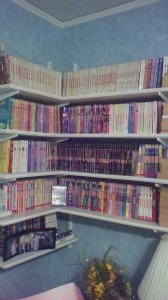
And yet, I knew from the instant I read about its impending release that I would be disappointed. Growing up, SVH and SVU were pretty much my life; how was Pascal–whose role in the series had always been kinda sketchy, considering all the books were written under obvious pen names–going to cram hundreds of Wakefield friends-and-family factoids into one book? Reading the acknowledgments only confirmed my suspicions. In them, Pascal thanks someone for “knowing everything there is to know about Sweet Valley and saving (her) from any number of memory lapses.”
Oh does she, Francine? Does she know “everything”? Orrr did she maybe just read the (absolutely hilarious and completely fabricated) SVH and SVU Wikipedia pages? Because seriously, the mistakes in Sweet Valley Confidential suggest that no one involved ever read past book #75. But don’t worry! I’m here to help! So step back, FP and FP’s little friend, and let someone who was once so absorbed by reading the newest SVH release (which, at the time, was #116: Nightmare in Death Valley) that she got locked into her local bookstore take over.
Before we get to why Sweet Valley Confidential is such a disaster, let’s get a little background. (Spoilers to follow, obviously). As its subtitle indicates, the book is a look at the lives of the Wakefield twins “ten years later.” (Ten years later than what, I’m not sure, since the books continue through the twins’ sophomore year of college but in SVC they’re only twenty-seven.) Elizabeth is now living in New York (yay!) working for some rinky-dink theater publication (boo!) and seething because Todd (you remember Todd-the boring guy she broke up with every twenty books or so) and Jessica are-surprise!-engaged. That’s right, Todd and Jessica are engaged and living in Sweet Valley, and all this went down while Todd and Elizabeth were engaged and living in Sweet Valley, so, yeah-that’s a pretty legit ouchie, unlike some of the other things that have gotten Lizzie’s panties in a twist over the years. It’s been eight months since Liz discovered that Todd and Jess were in heat love, and she hasn’t spoken to either one since, but when her grandmother’s 80th birthday party brings her back to Sweet Valley (yeah, I couldn’t believe that was the best excuse they could come up with either), Liz has to figure out how she’s going to face the couple who betrayed her.
 Of course, a visit to Sweet Valley reveals what everyone else is up to now as well: Lila Fowler and Ken Matthews are now married, but separated, and getting divorced, but still sleeping together, or something? Oh, and Ken’s in the NFL. Of course. Enid Rollins is married, but slutting it up with AJ Morgan, because she can. Steven Wakefield is married to Cara Walker, except not anymore, because–surprise! He’s gay! And boning Aaron Dallas! Bruce Patman is now BFF with Elizabeth, and completely in love with her, even though she’s still boring. (Though she uses much more profanity these days). And Winston Egbert’s dead.
Of course, a visit to Sweet Valley reveals what everyone else is up to now as well: Lila Fowler and Ken Matthews are now married, but separated, and getting divorced, but still sleeping together, or something? Oh, and Ken’s in the NFL. Of course. Enid Rollins is married, but slutting it up with AJ Morgan, because she can. Steven Wakefield is married to Cara Walker, except not anymore, because–surprise! He’s gay! And boning Aaron Dallas! Bruce Patman is now BFF with Elizabeth, and completely in love with her, even though she’s still boring. (Though she uses much more profanity these days). And Winston Egbert’s dead.
So! Things have been exciting! And apparently people only marry other people from Sweet Valley! Did not see that coming! Anyway, everything ends up working out well and everybody’s happy (except Winston, because he’s still dead), so hooray for Sweet Valley! But for this twenty-seven-year-old woman experiencing Sweet Valley from the other coast, a happy ending couldn’t make up for all the issues along the way. For example:
- For whatever reason, AJ Morgan is mentioned about a zillion times throughout the book, but I’m pretty sure that FP and her expert friend had him completely confused with someone else because he wasn’t A) A bad boy by any stretch of the imagination, B) A blond (hello, ginger!), or C) introduced to Jessica until SVH #48: Slam Book Fever, which means he couldn’t have touched her boob in 7th grade.
- On page 278, “Bruce Patman kissed her! That had never happened before. Not while she was conscious anyway, but that’s a long story.” Ahem. First of all, I assume the “not conscious” reference is to SVH #7: Dear Sister, in which Lizzie’s head is all messed up because of her motorcycle accident and she ends up hooking up with Bruce. (Fun fact: This book is where I read the word “breast” for the first time!) She wasn’t unconscious, just dumb. Second of all, excuse me, but have we forgotten SVH #102, Almost Married? Yeah, Bruce and Liz are old news.
- Speaking of old news, was Jess and Todd getting together reallllly such of a shock, Lizzie? Because they’ve done it before. About a thousand times. Like when you were on trial for killing Sam? They hooked up. In college? They hooked up. I could’ve told you this was coming. But I probably wouldn’t have, because you’re dumb and even ten years later I still don’t like you.
- Also on page 278? “The possibility of Elizabeth Wakefield cheating on anything or anyone was near impossible.” Oh, really? Because if I recall correctly, Elizabeth Wakefield cheated on everyone. The only difference was that she never got caught. Or, when she did, Todd just didn’t give enough of a crap.
- You’re going to write a list of dead Sweet Valley-ites and include Suzanne Devlin, the bitch from like three books, but completely ignore Olivia Davidson, who got crushed by a refrigerator during an earthquake? I mean, I can forgive the fact that she appears in SVU #8, creepy as it is, because I’m pretty sure that was written before you killed her off, but come on.
- The twins’ lavalieres do not have aquamarines. They do not have their initials engraved in them. They just don’t. Shut up.
- No, Ned Wakefield will not be “walking his daughter down the aisle for the third time.” (Oh, yeah, Jessica also married and then ran out on some French guy). He didn’t walk her down the aisle the first time. He didn’t even know she married Mike McAllery until they were already en route to divorce. Save your cliches for when they make sense.
- We’re just going to completely ignore that Enid Rollins hasn’t been Enid since she started college, huh? IT’S ALEXANDRA NOW.
And so on, and so forth. And that’s ignoring the total disrespect paid to later relationships in the series. Are we really supposed to pretend that Cara’s the only woman Steven’s loved since Tricia Martin died of leukemia, even though he got Billie (a woman, as he was not yet into manparts) pregnant and they almost got married when they were living together in college? That Bruce and Lila’s relationship was “a fling” despite the fact that they were quite in love and moved in together in college (albeit only really for SVU #17)? That it’s acceptable that Elizabeth’s relationship with Tom Watts is referred to as “brief” and basically compared to her stupid crapfest of a farce relationship with Sam Burgess? But I’ve said too much.
In short, this is not a book for Sweet Valley purists, but it doesn’t really matter. Because if you really loved Sweet Valley, you’ll read it anyway. Because you can’t not. Because Francine Pascal, for all she doesn’t know about her own creations, is still your overlord. Because Sweet Valley is like Jessica Wakefield herself; no matter how much she hurts you, you will always, always end up forgiving her.
It’s difficult to argue that there’s a better scenario for literary agents and publishing houses than stumbling upon a true crossover novel, i.e. a novel which spans more than one audience. After all, it’s the kind of math even the dumbest of Kardashians could do–X+Y is greater than either X or Y alone. Sure, having a teen audience is great, but having a teen and adult audience is the kind of thing that practically flings books from the shelves. For whatever it may say about our country, there’s a reason Twilight was a huge hit–both kids and adults alike were somehow drawn into the story of a sparkly bloodsucker and his brittle ice princess, which means both kids and adults were buying those glossy black books.
What’s a little easier to argue about is what actually makes a book a crossover. What was it about Stephenie Meyer’s work–or even J.K. Rowling’s–that made agents and publishers think, “Hey, unlike Trix, these are not just for kids?” And honestly, I’m not sure. (I mean, give props to the people who discovered Stephenie Meyer for thinking that piece of manuscript would appeal to anybody, amirite?) But here’s what I think makes a crossover, plus some recommendations that fit the bill.
1) Universal themes. Not being able to get a prom date? Feeling bullied by the cool girls? Sure, those are the kinds of things that rear their heads in some form or another throughout life, but set in high school, they just seem so…high school. But loss, isolation, abandonment, substance abuse, sexual abuse… these are the kinds of things that stay with you a lifetime, which is precisely why just about all “Edgy YA” books are crossovers.
Recommendations: See my earlier post
2) Feature characters of a “crossover” age. Few YA books are a harder sell than ones set in college. As one agent helpfully explained to me, kids in high school want to read about kids their own age, and once they get any older, they want to read about adults. So who wants to read about 18-23-year-olds? You do, because when you do see YA books featuring kids in college, they’re probably pretty damn good to have pushed through the “Sorry, we can’t sell books set in college” barrier. Plus, college is the best of all worlds–you don’t have to watch the author struggle to deal with the adults, the way they often have to do with books set younger, but you’re still dealing with characters who generally don’t have to deal with the crazy issues of the real world just yet. Plus, they sleep around.
Recommendations: For those wondering about my absolute favorite YA books, here’s your answer.
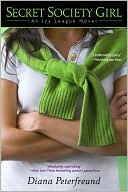
series by Diana Peterfreund. OK, yes–secret societies may feel overdone, and as you read it, scenes from The Skulls may flash in front of your eyes over and over again, and the Yale setting is so laughably thinly disguised (as “Eli University,” no less) that it’s almost distracting how badly you want to yell “Just call it Yale already” (even though the author’s well aware she’s not fooling anybody), but none of these things matter. In this four-book series, Peterfreund has created such funny, quirky, flawed, well-fleshed-out characters that you almost wish every single one of them had his or her own spin-off series. The writing is effortlessly humorous and intelligent, and the narrator so fabulously flawed, that the plot is almost beside the point. Plus, if you don’t fall in love with the romance(s!) in this series, you pretty much have no soul. Or libido.

. Here’s the thing about Jessica Darling–she’s probably you. Or at least, she’s what you think you were. Those times in adolescence you questioned why you were friends with the people you were friends with and pondered how you fit into your surroundings and the fact that you were obviously destined for better things… be prepared to dive right back into those moments with a vengeance. My immediate reaction when reading the first book in the series, Sloppy Firsts, was, “Oh my God, she is so me,” which was immediately followed by, “Aaaaand every other girl who’s ever thought of herself as ‘the smart one.'” Granted, we weren’t exact replicas, but there’s something about the heroine of McCafferty’s series that just drips with empathy. Well, at least for the first two books. After that, I will concede that the series goes downhill, to the point where, as someone very accurately pointed out to me once, “the fifth book is basically fanfic,” but Sloppy Firsts and Second Helpings continue to stand on my shelf as two of my favorite YA novels to date. Hey, if they’re good enough to be plagiarized, they’re good enough for you.

by Stephanie Kuehnert. Kuehnert didn’t plan to be a YA author; that much is clear from this interview in which she effectively says that she would never have considered pitching this sex-drugs-and-rock-‘n-roll story of a girl (turned woman, as the protagonist ages from 14 to 23 through the novel) who goes the rock-chick route in order to track down the mother who abandoned her as YA had her agent not convinced her to do so. And it worked, which is great news for anyone whose ever felt like his or her life didn’t fit into the neat high school package of after-school activities, dances, and cheerleading squads, since this gritty and emotional novel blatantly sidesteps the norm in every possible way.
3) The setting and/or narration is so rare or unusual that it transcends direct audience classifications. An odd assessment, to be sure, but you know how sometimes you read the description of a book and you think “How could I not read about that?” These are precisely the sorts of books that have that effect, whether they present a little-seen perspective, a creative choice of speaker, or an uncommon geographic locale.
Recommendations: These books vary greatly in every way, but I highly recommend them all.

by Markus Zusak. This book is so much a crossover that it’s actually been marketed as both adult and YA literature, depending on the country. (In the US and Canada, they opted to market it as the latter.) In fact, I had no idea about its YA classification until long after I read it… which I only did when my mother referred it to me after having read it in her book club. This novel about the Holocaust, narrated by death, is about as heartbreaking a read as it gets (you do not want to borrow my horribly tear-stained copy) but one that is, in my opinion, not to be missed, both for its original voice and the content itself. Granted, this opinion is not universal, and of all the books I do and will recommend, it’s probably the least popular, but I stand by it. Besides, when was the last time you agreed with The New York Times?

by Sherman Alexie. The name Sherman Alexie is pretty sufficient to get me to read anything these days, but none of his works have touched me the way this semi-autobiographical story of a Native American high school freshman struggling to change his life by going to school off the reservation has. It so perfectly encapsulates both what is so difficult and so special about that age and combines adolescent empathy with a setting so many of us know absolutely nothing about. It is somehow both inescapably young adult and fit for all ages, whether you love it for its teenage protagonist or Alexie’s revealing depictions of life on the reservation.
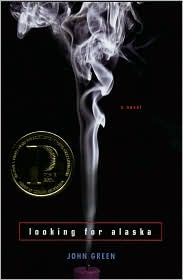
by John Green. Admittedly, this book probably falls more appropriately under the first category–particularly with its emphasis on philosophy towards the end–but with so few contemporary YA books narrated by boys nowadays, Green is becoming something of a standout simply by approaching adolescence from a male perspective. That isn’t to say that his female characters are one-dimensional; on the contrary, the title character (yes, I was kind of disappointed to learn that Alaska was a person and not the book’s setting, but she made up for it) is only one of Green’s wild, free-spirited, pensive female creations. (If you like this title, check out Paper Towns as well. I haven’t read the rest of his books yet, but rest assured, I will.) Plus, it’s on the “challenged” book list, so everyone’s a winner! Except safelibraries.org. Man, do they hate this one.
Feeling childish? How about mature? Well, now it doesn’t matter–get reading!
I’m pretty officially an adult. I have a full-time job, a full-time husband, full-time bills, and a part-time metabolism—all signs that I’ve officially passed the point where I have to get nervous about being carded. And yet, when it comes to literature, my genre of choice is more appropriate for a high-school library than my own personal one, and as book sales have shown, I’m hardly alone.
So what is it about young adult literature that is so damn appealing to those of us who could just as easily be reading books for grown-ups? And, more importantly, why do we want to send ourselves back to high school when we spent four years barely managing to claw our way out of it?
In that latter question actually lies part of the answer—because it allows us to do it again as someone else. Weren’t in the popular clique? No problem—try again as Gossip Girl’s Blair Waldorf, Pretty Little Liars’ Hanna Marin, or Sweet Valley High’s Jessica Wakefield. Weren’t the smart standout who somehow manages to seduce an entire school no matter how much she stands out, blunders, or self-effaces? That’s OK–Private’s Reed Brennan and The It Girl’s Jenny Humphrey (yes, that Jenny Humphrey) have got you covered. Weren’t the princess of a totally made-up country? Princess Diaries’ Mia Thermopolous FTW! And let’s not get started on whether or not you had magical powers or fell into a love triangle with a vampire and a werewolf.
But of course, high school isn’t all about what we weren’t; it’s about what we were, and it’s those authors who so successfully encapsulate the enormous range of trials and tribulations of adolescence in their novels, from not having a date to not having a mother, that have turned YA lit into a must-read genre for all ages. High school is, in a manner of speaking, the last “shared American experience” before we all diverge in myriad ways; although we didn’t all go to college or vocational school or seminary, or become teachers or doctors or lawyers, we all spent the four years preceding those adventures in a fairly similar environment.
Because being a teenager isn’t like being an adult. The relationships between characters in your average contemporary young adult book don’t include the complications of marriage, divorce, and kids. The ways they choose to resolve the issues they face don’t have to take into account how they will affect their jobs or their children, or how they’ll continue to pay their bills. The young adult’s perspective is a selfish and narrow one in the most innocent meanings of those words, and one that I think all adults miss being able to have every now and again.
But make no mistake—there’s nothing lighthearted about today’s bestselling contemporary YA. The sci-fi/fantasy subgenres have proven that YA books can appeal to any age or gender, and in order to keep up, contemporary authors are now veering away from the old teen-centric topics like romance, social competition, and puberty, and replacing them with the types of subjects that possess the depth and universality to appeal to all ages in order to obtain a similar “crossover” appeal, creating a new sub-sub-genre which is all but officially referred to as “Edgy YA.” It’s a silly word choice—does anyone say “edgy” non-ironically anymore?—but the truth of the matter is that the boldness of authors covering major issues in the latest crop of books is nothing short of astonishing, and for teens who don’t even know how to begin discussing topics like rape, suicide, eating disorders, drugs, and school shootings, the value of having an author speak frankly on the subject in a book targeted to their age group is immeasurable.
For those interested in coming over to the dark side, a few recommendations for where to begin:


The former is a unique look at the capability of average, relatable teens to do terrible things in response to abuse and abandonment; the latter, a book from the perspective of a teenage girl whose father is returning from prison early after being put away for sexually abusing her. I highly recommend both, but if you’ll only try one, make it Leftovers for its absolutely perfect final line.

Anderson is pretty much the mistress of edgy YA, and each of these books alone could justify why. The woman is brutal when it comes to honesty and detail, and Speak has, for years now, been the young adult novel about date rape. (If you read nothing else by LHA, at least read this post from her blog in which she addresses a professor’s claim that Speak is soft pornography.) In 2009, Anderson added Wintergirls to her list of publications, a chilling and powerful depiction of eating disorders from the perspective of an anorexic whose bulimic frenemy has just passed away.

Rarely has a standalone YA novel generated this much attention and praise so quickly. Throw in the facts that this was Asher’s debut and that it was just acquired by Universal and you’re looking at a bonafide literary phenomenon. This novel about teen suicide, told from the perspective of the boy who loved the girl who killed herself and left behind thirteen tapes to explain the motivations behind her actions, is not only a heartbreaker but an insightful look into how seemingly meaningless words and gestures can snowball into dangerous consequences when paired with an adolescent mind.
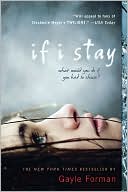
(NB: Clicking either the book or the link will be the littlest bit spoilery.) A heartbreaking work from start to finish, If I Stay takes place almost entirely within the subconscious of its heroine Mia as she lies in a coma following a car accident that’s just claimed both of her parents. As its title suggests, the book is an examination of her life up to that point as she struggles to decide whether her new life will be worth living or whether it’s time to stop fighting.

This incredibly dark novel about the aftereffects of a school shooting–particularly on those who loved the shooter–is impossible to read without reflecting on the similar tragic events in our nation’s recent history. Told from the perspective of the girlfriend of the now-deceased shooter, who is still struggling to understand her role in the mass-murder, this book feels like a must-read for anyone who’s ever wanted to think about school shootings in any way other than as they’re presented by the media.
I’d also be remiss if I didn’t mention Before I Fall and Delirium, both by Lauren Oliver, although I have not yet read either one due to their not yet being available in paperback. They are both widely considered to be excellent, and I hope to confirm that as soon as possible.

Most importantly, however, I feel credit should be given where credit is due, and I don’t think any single person on Earth deserves credit for the propagation of frank literary dialogue with teens like Judy Blume. No author of books for teens has boldly faced down as much controversy as Ms. Blume for her books which address topics like puberty, masturbation, losing your virginity, and bullying. Judy Blume started the discussions no one was having, and if my word isn’t enough for you, perhaps the fact that a compilation with this title actually exists will do it.
Happy reading!
